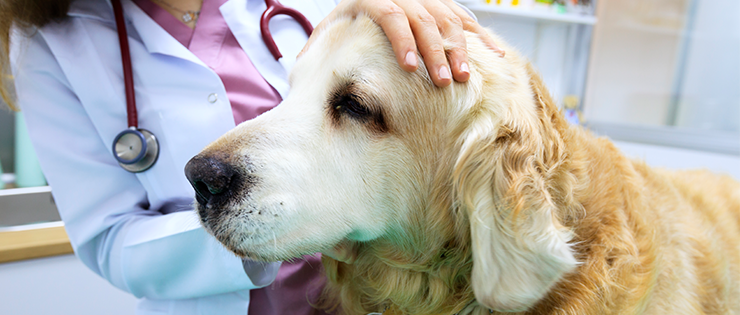
Have you ever been patting your cat or dog, and suddenly felt a lump or bump along their body, that wasn’t there yesterday? Just about everyone who is fortunate enough to spend their days alongside an ageing pet, will experience this. Lumpy tissue can form for many different reasons, and can consist of varying cell forms, so it is always worth assessing for body bumps regularly, monitoring change, and getting them checked out.
My dog Chester has had a lipoma (non cancerous fatty lump) on his right shoulder for about 5 years. It initially appeared as the size of a pea and is now bordering on the size of a 50-cent piece. It can be scary discovering lumps on your pet, so any changes should be analysed by your trusted veterinarian, instead of adopting the ‘I’ll just keep an eye on it’ approach. Your vet will have a variety of methods for assessing the possible malignancy of a lump.
Most Common Approaches
Aspirate
(Fine needle Aspirate/FNA) - Usually, this can be done without anaesthesia and during a regular consultation, however it depends where the lump is located. More often than not the cells collected through the needle can be analysed under a veterinarian’s microscope and indicated as benign (non-cancerous) or malignant (cancerous). If the lump is oozing pus, the fluid can be squeezed onto the slide and analysed without the needle.
Biopsy
If the aspirate shows bloody/coloured fluid, the lump is usually biopsied. Sometimes the vet will take the entire lump if possible, and observe it during surgery for a better diagnosis. The biopsy is then sent to pathology for a more conclusive diagnosis. Your pet is usually given a general anaesthetic for this, or, at the very least, a sedative to reduce stress and discomfort.
Benign Lump Diagnoses
Lipomas
Fatty lumps usually present on dogs who are overweight and/or older.
Skin Cysts
Usually caused by blocked skin glands, called sebaceous glands. They are generally harmless, unless they cause irritation to your pet.
Histiocytomas
Lumpy red raised skin that usually resolves quickly. Although usually present on younger dogs, these lumps can appear on dogs of all ages and should always be aspirated, to avoid confusing them with a possible malignancy.
Adenomas
These are generally spotted around the anal area (perianal) or under the skin (sebaceous). Whilst the sebaceous adenomas usually cause nothing more than irritation, the perianal area can be a more common location for malignant lumps, so these must always be seen to by a vet.
Granulomas
Usually the lumps that are more firm to feel. They can appear similar to malignant lumps, so these are usually removed as a precautionary measure.
Sometimes, unfortunately, the funny lump is a nasty one. If the lump you have checked out is diagnosed as cancerous, there are a range of treatments, and if caught early, many can have great curative outcomes.
Cancerous Lump Diagnoses
Mast Cell tumours
These do not always have a particular look or feel, so any lump must be checked out, to test for this type of tumour.
Fibrosarcomas
These are generally localised and felt under the skin. Because they can appear similar to lipomas, aspirates are critical to deciphering between the two. Removed earlier, prevents larger areas having to be removed to ensure the cancer is completely gone.
Melanoma
Despite popular belief, these melanomas are not really linked to sun exposure, and are generally less devastating that human melanomas. They are dark spots, mostly seen on mouth and leg area, and can be either benign or malignant. It is always best to remove these as soon as possible.
Breast cancer
This is one of the many reasons why I advocate for spaying female dogs. Mammary carcinomas are far more likely to present in non-spayed females. Surgery is invariably recommended, whereby the glands are removed and if necessary, chemotherapy may be appropriate. Note that not all mammary lumps are malignant, however, it is recommended that they be removed. Almost all male mammary lumps are however malignant and will require immediate attention.
This article is not meant to scare you, and send you all lining up to the vet, but, it is worthwhile becoming aware of the different types of lumps our pets. Knowledge is power, and so it can be invaluable knowing which lumps are potentially more harmful than others. Keeping an eye on our pet’s bodies over time can help us to recognise something early, and, if necessary, treat it quickly with the least invasion. So, have a chat with your trusted vet if you notice a lump and get to know your pet’s body. The more we are aware of, the more action we can take to protect our beloved pets from harm.